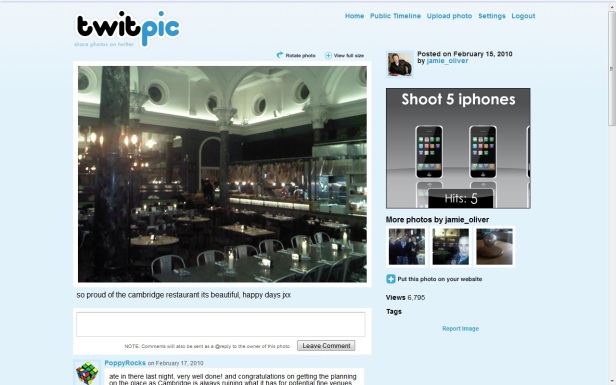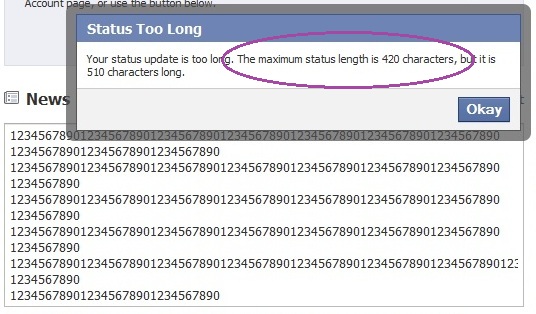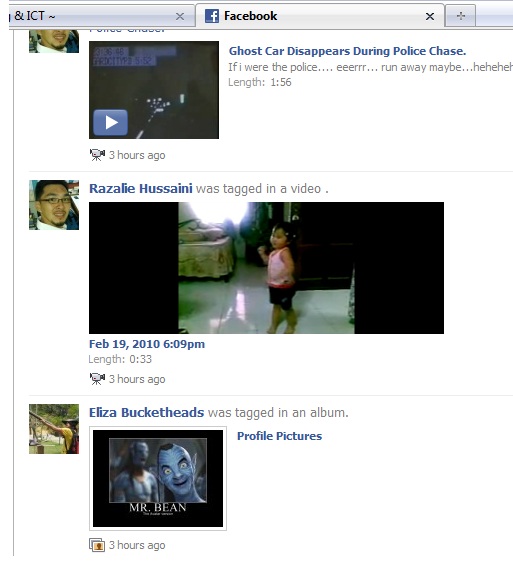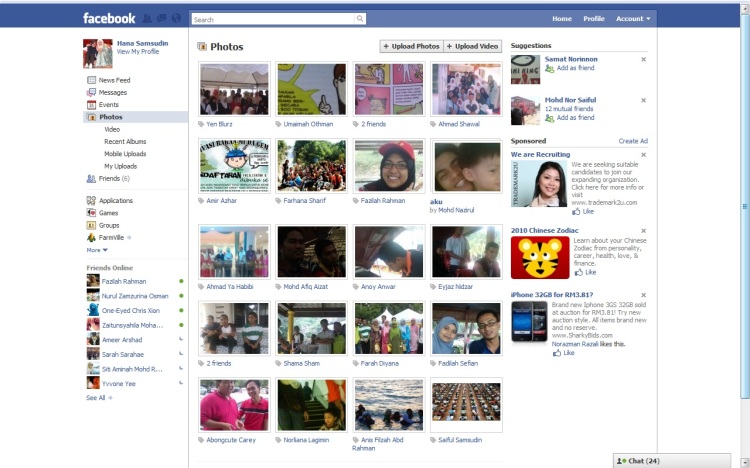The Final Say
All posting from 1 to 6 are done as the course requirement for SKBP1023 Language and ICT under Ass. Prof. Datin Dr. Norizan Abdul Razak.
I would like to express my gratitude towards Ass. Prof. Datin Dr. Norizan Abdul Razak, our lecturer, my fellow English Language Studies (ELS) friends in the National University of Malaysia and every single fingers and eyes that have participated in making my blog work; whether in viewing or commenting or helping to promote it or simply just dropping by. I hope, at the very least, you have gained some useful information while blog-walking here. Also, I would like to thank all sites I’ve used as resources and that have ‘pingback’ed this very blog. Well, I can assure you that the pleasure’s all mine.
Till then, TQ
Concordance=Concord+dance?
Nah… how would that make any sense? And it’s not acronym or anything such either. 😉
So what’s concordance? Concordance is polysemous; however, in this case, let me show you what concordance is.
English Language Proficiency Assessment

This is the main page of Exam English site. The tests include: Level Test, IELTS, TOEFL, TOEIC, CPE, CAE, FCE, PET, KET, BULATS, ECCE, ECPE, and PTE. For each test, there are even different categories of tests such as: vocabulary test, level test, grammar test, listening test and writing test.

This is TOEFL Vocabulary Test 2. TOEFL stands for Test of English as a Foreign Language. You immediately know if you're right...
Brief Review On…
ONLINE LANGUAGE PROFICIENCY ASSESSMENT by
1) Norizan Abdul Razak
2) Hazita Azman
3) Sallehuddin Abdul Aziz
4) Wong Fook Fei
5) Afendi Hamat
(National University of Malaysia or Universiti Kebangsaan Malaysia)
Online Test Specifications:
Specifications for the test include information on content, format and timing, criteria level of performance and scoring procedures (Hughes, 1989)
Points to Ponder:
“Learning the English language will reinforce the spirit of nationalism when it is used to bring about development and progress for the country… True nationalism means doing everything possible for the country, even if it means learning the English Language.”
(Mahathir, 1999)
Sites for Poems Review (and Much, Much More!)
My Choices:
1st) http://www.shakespeare-online.com/
- Shakespeare Online provides a wide range of information regarding, as the name suggests, Shakespeare or William Shakespeare. It provides a detailed biography of him and his family, a complete list (and text) of work he had written and conducted, pages of their analysis, the list of stages he’d worked in, and the group of scholars of his honor. You may refer to the directory to guide you through the website. Most importantly, it helps you understand a work, for example a sonnet, line by line to decode the language to what we call our standard English right now.
- The site displays all Shakespeare’s work, from sonnets to plays, with analysis to help readers understand what the man had written especially because of the language used and the implicit of the text. Example… Sonnet 18. (Do click the thumbnails for larger view.)
3. Figuratively, the site is created for people who study art and literature all around the world, especially the ones whom his major is Shakepeare’s writing and the person himself.
2nd) http://poemsworld1.wordpress.com/
- This blog, known as Poems World analyzes the poems in Malaysian secondary school English literature poems. Personally I feel it helps teachers to understand better and easier, and students can even go online and read it here if they refuse to read the conventional material since the input is related. It even has videos for them to see regarding the poems.
- The main objectives are:
- Understanding and retelling in one’s own words the story, play, poem and song heard and read, and the film viewed, and giving one’s opinion of the text
- Explaining the message the writer tries to convey and discussing how this relates to one’s life
- Reciting poems with feeling and expression
3. This site is targeted on teachers of literature as well as students (of Malaysian secondary schools) as it gives more interactive and simpler approach of understanding the literature work. Proof? 
 Now let us take the same example of poem: Sonnet 18.
Now let us take the same example of poem: Sonnet 18.
Art Attack!
Definitely having art attack at the moment. This, I will prove by sharing with you two favorite art piece of mine:
Sonnet 18 by none-other-than William Shakespeare (1609)
and
The Road Not Taken by Robert Frost (1920)
***
~ Sonnet 18 by William Shakespeare ~
Sonnet 18 is the most known and loved sonnet in the sum of 154 sonnet.
 The author, William Shakespeare needs no introduction forhis masterpiece is well-known and treasured till this very moment.
The author, William Shakespeare needs no introduction forhis masterpiece is well-known and treasured till this very moment.
In fact, every now and then, people would do remakes of his work to re-live this playwright/poet/actor’s remarkable talent.
His other works include:
- the world phenomenon : Romeo and Juliet
- Hamlet
- Julius Caesar
- Macbeth
- Othello
- my personal favorite, The Taming of the Shrew
***
~ The Road Not Taken by Robert Frost ~
 Robert Lee Frost, American poet and playwright had won (not one, not two, not three but) four Pulitzer Prizes for Poetry during his career.
Robert Lee Frost, American poet and playwright had won (not one, not two, not three but) four Pulitzer Prizes for Poetry during his career.
- 1924 for New Hampshire: A Poem With Notes and Grace Notes
- 1931 for Collected Poems
- 1937 for A Further Range
- 1943 for A Witness Tree
Despite having to relate more to rural-based writing, Frost grew up in the city.
He published his first poem in his high school magazine.
I reckon one’s passion starts early, ey?
Frost quoted:
“One stanza of ‘The Road Not Taken’ was written while I was sitting on a sofa in the middle of England: was found three or four years later, and I couldn’t bear not to finish it. I wasn’t thinking about myself there, but about a friend who had gone off to war, a person who, whichever road he went, would be sorry he didn’t go the other. He was hard on himself that way.”
~ Bread Loaf Writers’ Conference August 1953

CMC is… (raise your hand, anyone?)
Cluster Munition Coalition? Certified Management Consultant? Civic Malaysia Club? Commercial Metals Company? I guess if you’re thinking about any of those, this is not the right space (but it’s my honor if you stay :)).
The CMC I’m referring to is ‘Computer-Mediated Communication’. If you think you haven’t come across CMC, second that. Have you used Facebook, Yahoo! Messenger or e-mails before? Then you have come across it.
Before we go any further… have you the slightest idea what CMC is? If we search on the Net, there could be millions hits, therefore I would like to focus on one particular book (we get conventional at times, but it works, right?) namely Online Teaching and Learning in ELT by the editors Muhammad Kamarul Kabilan, Norizan Abdul Razak and Mohamed Amin Embi who all are lecturers in their respective universities. It takes the definition from Levy, 1997:
Levy (1997:79) defines CMC as “concerned with communication between two or more participants via a computer covering technological platforms such as e-mail, bulletin board, discussion list and computer conferencing, both text- and video-based”.
You can also refer to the definition of CMC from my previous blog here.
I’m going to quote two chapters in this book regarding CMC: Use of Computer-Mediated Communication to Facilitate Second Language Acquisition and Computer-Mediated Communication in Literature Reading.
*Use of Computer-Mediated Communication to Facilitate Second Language Acquisition*
*Computer-Mediated Communication in Literature Reading*
Web-based Computer Application : all CMC modes referred before such as
- e-mails
- e-forums
- chat rooms
- online discussion groups
- mailing lists
- blogs
- instant messaging
Looking For Your Perfect Match?
Ha! Did you think I was promoting match-making service? 😀
If it caught your attention, it works. Otherwise, I should work on my auditing skill.
Anyway, this is one way of using technology nowadays. Other than communication, Internet is an efficient business area and definitely with global market. Who knows, given a chance, I would jump at the opportunity of entrepreneurship. I believe anyone could give it a go.
Right, last but not least, all this ad is plainly fictional. F.I.C.T.I.O.N.A.L only. 😉 The featured site will link you only to your search engine which may produce “no result” page. Lol. This is just for fun; messing around with computer application tools!
Till then, please share your thought below. Thanks!
So we’re NETSPEAKing…
OMG, someone actually pingback this very blog!
Who would’ve thought, ey?
FYI, the author was “sitting on the fence” between FB and Twitter so he used my blog s n example to clarify his tendency; clarifying the pros and the cons.
If this is Yahoo! Messenger or a diary blog, I would’ve written it that way or maybe simpler. (This blog is rather semi-formal for me). Now, this is what we call Netspeak, an internet language or slang used by any internet users for some purposes related to the characteristics of the Internet itself. Moreover, as defined,
“Netspeak is the special language, abbreviations, and expressions used by people when communicating using the Internet.” ~ http://www.macmillandictionary.com
That definition should give us a clear idea, shouldn’t it? We can say that any form of language used while communicating via Internet tools and applications is Netspeak. These services promotes effective and expressive type of communication between users. For example, there are loads of interactive features available when we use it: emoticons, smileys, images, videos, audios, links and even pingback. In the Net, we write not on our own but with others.
People, since we’re talking about language in the context of Internet language, then the prefect man for this subject of matter is none other than the language guru, David Crystal. Who is he?
* Specialized in English Language Studies from University College London
* Had successfully conducted various research regarding language
* Has published 100++ books
* Currently an Honorary Professor of Linguistics at University of Wales, Bangor
*NETSPEAK*
David Crystal’s approach to Internet slang or Internet language or Netspeak is very open. Rather than considering Netspeak as a form of language abuse, he accepts it as a language revolution along side the development of technology. David Crystal considers the impact of Netspeak as, simply without prejudice, a new medium. Nowadays, the communication using technology has evolved around messages instead of grammatical or conventional, proper language.
With technology, Netspeak somehow adapts itself to, initially, fit into a 160-characters limit mobile phone text messaging compose. Things seem to move on well from there. Whether via Internet, like, social networking services, instant messaging and chat rooms, there often is characters limit for each post or status. This limits applies the modern technology principle: simple, straight-forward and fast. Hence the Netspeak becomes very efficient and helpful. Most words are abbreviated or spelling-altered according to phonology. For instance…
Abbreviation
- GMTA: Great Minds Think Alike
- BCBC: Beggars Can’t Be Choosers
- GBU: God Bless You
Spelling-altered According to Morphology
- Ate: 8
- Late: l8
- Been: Bn
- To: 2
(More examples can be further read in http://en.wikipedia.org/wiki/SMS_language)
Besides, emoticons may replace you, facially, artificially.
If that is not enough, punctuation plays a big role in expressing emotions. For example…
“I will!!!!!!!!!!!!!!!!!!”
What does this form of sentence make you feel? The writer is rather very determined, or maybe, annoyed? As though it may seem ambiguous at some point, the emotion can be determined according to the context of the discussion. (And the exclamation mark can go on and on and on and on depending on the liking of the writer)
“What????” and “What?”
In academic writing, the former is not acceptable because it does not indicate professionalism of the author, it may look biased and emotional. However, sticking to the rule that ‘there is no rule’ in using technology as a communication medium, especially informal, you can use as many punctuation as you like. The former shows how the message recipient is shocked while the latter seems curious. Besides, isn’t it funny how we use punctuation to replace OUR facial expressions?
But wait, Netspeak is not just all about cutting words short, or putting up motionless or motioned pictures, or toying around with characters. On the very bright side, Netspeak allows human to be creative with words; an art that may change by time, but favor us by the moment. It represents the transformation of how communication takes place using language. We know that language changes according to human and cultures; and now it is also molded by technology. It epitomizes the existence of a new human generation by the existence of a new medium of communicating. Well, literally it is not that new. It has started to evolve in the early of the twentieth century, and I sense it will keep evolving until the end of humankind.
Before I leave you, please do watch this clip. This is David Crystal and his view on Internet Language.
*all credit goes to David Crystal and Macmillan English
Source: David Crystal’s official website- www.davidcrystal.com
TWITTER vs FACEBOOK… want to bet?
Twitter. Facebook. Twitter. Facebook. Twitter. Facebook.
Do you have a hard time to choose? I doubt. Surely most of you have more than one social network account. Admit it, you’re one of the addicts; you can’t leave a second wondering if someone has responded your updates and if your friend has commented on a picture you uploaded or you’re restless in the lecture hall because you have just remembered the crops you forgot to harvest this morning. And you just can’t seem to get enough of one account; you figured you should have ‘this’ for friends and ‘that’ for business purposes while ‘the other’ for the latest updates on your favorite stars. Well, I don’t blame you. It’s like language, it’s rare to find people who is monolingual.
So I’m not a monolingual.
My two picks would (obviously…) be Twitter and Facebook and here I would like say what I like and don’t about both networks, but most of all we’ll look at the similarities and differences between them.
Basically Twitter and Facebook are both social networking sites that enables connectivity between their users by updates and media sharing. Through a free sign-up, you can enjoy the all of the features provided. From getting new friends, catching up with peers or getting updates from old friends, all is possible by their updates or ‘shout outs’ on the main page of the site. In fact, they allow photo sharing. We love this feature, don’t we? (Now why do I feel like a promoter…?) Sharing gossips, showing off our incredible, summer vacation in Maui 😉 The best part is you can comment on those photos! But these are all the ground for any social networks, even with the earlier sites like Friendster and MySpace. If there’s no such thing, we wouldn’t be interested anyway. So what makes them different from one another?
Since my focus is only two sites, lets go to the differences of both. The prior difference you will notice between Twitter and Facebook is the simplicity of the former compared to the latter. Once you sign in into Twitter, all you see is your ‘following”s updates and another column that shows the quantities of your ‘following’s, followers, lists and updates.
On the other hand, for Facebook, you can see so much of… well, almost everything.
More evidence on Twitter’s simplicity?
…ON STATUS UPDATES…
The characters allowed in one status update in Facebook is three times the Twitter’s. Moreover, in Twitter, you can only type in texts and links but in Facebook, there’s more. Facebook however allows texts, links with preview, images, videos and notes feature for longer text.
Talking about this available features on status updates, the links are dealt differently between these two social networks. If in Facebook, when you want to show a photo or video, you can put the URL on the status updates and others can watch or listen to it instantly on that page. For example…
Additionally, in Facebook we can comment on our and our friends’ updates (and this includes the quizzes and games announcements). The updates also include notifications. To some it becomes very informative, to others it is a bit TOO informative (and hence, annoying). Of course, that’s up to you.
…ON PHOTO SHARING…

- For Twitter, the photo sharing features is another site. You have to sign in into http://twitpic.com/ to be able to upload and access photos. We can even consider it as another social network because you can interact with others through comments and profiles. You can even put the pictures on your website, regardless they are yours or not.
… ON FRIENDS, FOLLOWERS OR FOLLOWINGS?…
In Twitter, your connection will be categorized into two: followers and (others that you are) following. In Facebook, you only have ‘Friends’. Twitter allows following others without having to need confirmation, and others can follow you, but the ‘followed’ have the option to block the person that follows you. I guess the same goes with Facebook, but since it only has one category that is ‘Friends’, you always need confirmation from the requested part.
… ON EXTRA FEATURES…
Extra feature means one has it and one doesn’t. So without any intention to be biased (really, honestly), Facebook has some parts that are unavailable in Twitter. For example, online games and quizzes (and also others mentioned before).
…AND THE WINNER OF THE BATTLE IS…
… chosen by me due to its interactivity and most all of the extra features, but mainly because most of my friends are loyal users of it. So, my score?
Yes, yes and yes, this is based on my environment and how I use this. To me, Facebook has been an efficient medium to stay in touch with my old friends and exchange news with them. Also, not missing an important part, I love the online games after a long day of lectures, tutorials, assignments, projects and readings. I couldn’t be happier getting away from a hectic world and closer to ‘nature’.
Last but not least, do visit my farm and help clean my tanks! 😉 Till then, take care.












































 enjoy!!! (^_^)v
enjoy!!! (^_^)v